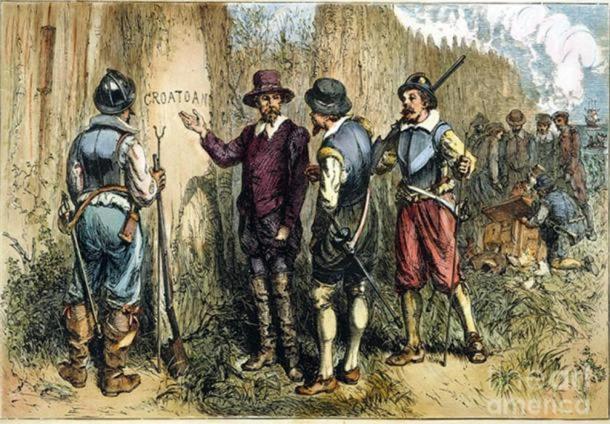Rising Tourist Numbers

Tourism in the Netherlands has skyrocketed in recent years, drawing in more visitors than ever before. In 2023, the country recorded a staggering 20 million international visitors, representing a sharp 15% spike compared to the previous year, according to Statistics Netherlands (CBS). This trend shows no signs of slowing, and the influx is especially intense in iconic cities like Amsterdam, Utrecht, and Rotterdam. With narrow streets and centuries-old infrastructure, these urban centers simply aren’t built for such massive crowds. Residents have reported that everyday life is being disrupted by the constant flow of tourists, from packed trams to overflowing bike racks. The government has started to worry that the authentic Dutch character of these places will be lost if the trend continues unchecked. Efforts to manage the flow of visitors are now a top priority among municipal councils, who fear that the Netherlands could become a victim of its own popularity. As a result, limiting tourist numbers has become a serious topic of national debate.
Environmental Concerns

The surge in tourism has also brought serious environmental concerns to the forefront. With millions of extra people visiting each year, popular sites like the tulip fields in Lisse and the canals of Amsterdam are seeing increased wear and tear. The ecological footprint from travel, particularly air and road traffic, is contributing to pollution and greenhouse gas emissions—a serious issue for a country where much of the land lies below sea level. The Dutch Ministry of Economic Affairs and Climate Policy has highlighted the urgent need to protect fragile ecosystems and historic landscapes from being loved to death. Some regions are already experiencing damage to dunes, forests, and wildlife habitats due to heavy foot traffic. New policies are being crafted to encourage sustainable practices, such as limiting cruise ship arrivals and regulating tour bus access. The government’s vision is to foster a tourism model that places environmental protection at its core, ensuring that the beauty of the Netherlands endures for generations to come. These changes are aimed at slowing environmental degradation while still welcoming guests who value responsible travel.
Strain on Local Communities

For many Dutch residents, the pressures of tourism are felt most acutely at the neighborhood level. People living in popular areas report that noise, crowded public spaces, and constant foot traffic are making daily life increasingly difficult. According to recent surveys, more than 60% of Amsterdam residents feel that tourism is negatively impacting their quality of life. The rise in short-term holiday rentals has also contributed to a shortage of affordable housing, with landlords favoring lucrative tourist lets over long-term tenants. Local businesses, once focused on serving the community, now often cater primarily to visitors, pushing out traditional shops and services. The government is trying to address these issues with new rules on rental properties and more support for local businesses. Authorities are also involving residents in discussions about managing tourism, aiming to restore balance to their neighborhoods. Limiting tourist numbers is seen as a necessary step to protect the interests and well-being of those who call these cities home.
Economic Implications

Tourism remains a major pillar of the Dutch economy, contributing roughly 10% of the country’s GDP in 2023, according to the Dutch Ministry of Economic Affairs. However, the costs of uncontrolled tourism—including increased maintenance of infrastructure, environmental clean-up, and higher living expenses—are starting to outweigh the immediate benefits. Local governments are spending more on policing, cleaning, and repairing public spaces damaged by heavy use. There is growing concern that the economic value of tourism may be undermined if the country’s appeal declines due to overcrowding and environmental harm. The government is actively looking for ways to diversify the economy so that the prosperity of the Netherlands does not rest solely on tourism. There are pushes to promote other industries, such as tech and creative sectors, while still supporting tourism in a more sustainable way. Promoting cultural festivals, regional food experiences, and lesser-known destinations is part of this effort. The aim is to ensure that the economic benefits of tourism are shared more evenly and do not come at the expense of the environment or local quality of life.
Government Policies and Regulations

The Dutch government has responded to these challenges with new policies designed to limit the negative impacts of tourism. In 2024, Amsterdam introduced a cap on visitor numbers for major museums and hotspots, using digital ticketing and reservation systems to control access. Cities like Rotterdam and The Hague are following suit with their own crowd-management plans. Regulations on short-term rentals have been tightened, limiting the number of days properties can be let to tourists and requiring registration. The national government is also developing a comprehensive tourism strategy focused on long-term sustainability, not just short-term gains. These policies are being crafted in close cooperation with local authorities and are informed by research from organizations like the Amsterdam Tourism Board. The hope is that clear rules and coordinated action will create a tourism sector that benefits everyone—visitors, residents, and businesses alike. The government has made it clear that unchecked growth is no longer an option, and that protecting the Dutch way of life is a top priority.
Promoting Sustainable Tourism

Sustainable tourism is now at the heart of the Netherlands’ approach to managing visitor numbers. The government is investing in projects that highlight eco-friendly travel, such as expanding cycling infrastructure and improving public transportation links to tourist sites. In 2025, a national campaign was launched to encourage visitors to see the country by bike, making use of the famous Dutch cycling routes that wind through cities and countryside alike. This shift not only helps reduce car and bus traffic in crowded city centers but also spreads tourism more evenly across the country. The Ministry of Economic Affairs and Climate Policy is also partnering with local businesses to develop sustainable accommodations and green tourism packages. These initiatives are designed to attract travelers who are conscious of their environmental impact and who seek authentic experiences. By emphasizing sustainability, the Netherlands hopes to set a standard for responsible tourism that other countries might follow. The focus is on quality rather than quantity, with the aim of preserving the country’s natural and cultural treasures.
Cultural Preservation

The protection of Dutch culture and heritage is a major concern as tourist numbers rise. Many of the Netherlands’ most beloved sites, from the windmills at Kinderdijk to the masterpieces in the Rijksmuseum, face the risk of damage from high visitor traffic. The government is investing in restoration projects and has increased funding for the maintenance of historical buildings and landmarks. Efforts are also being made to educate tourists about proper conduct and the importance of respecting local customs. Some sites have introduced visitor limits or mandatory guided tours to prevent overcrowding and minimize damage. Community-driven initiatives, such as local festivals and workshops, are being promoted to keep traditional crafts and stories alive. By taking these steps, the Netherlands aims to ensure that its unique culture is not diluted or lost to mass tourism. These policies not only protect the country’s heritage but also enrich the experience for visitors seeking genuine connections with Dutch culture.
Visitor Experience Enhancement

Enhancing the quality of the visitor experience is a key objective in the Netherlands’ new tourism strategy. Overcrowding has led to complaints from tourists about long lines, full trams, and difficulty enjoying iconic sites. To address this, popular attractions are implementing timed entry and online reservation systems, allowing a smoother and more personalized experience. New visitor centers and information points are being created to guide tourists toward less crowded and equally interesting destinations. The government is also working with the hospitality industry to improve customer service and offer more diverse experiences. Feedback from tourists is being collected regularly to identify pain points and areas for improvement. The goal is to create an atmosphere where every visitor feels welcomed and valued, rather than just another face in the crowd. By focusing on visitor satisfaction, the Netherlands hopes to maintain its reputation as a top travel destination.
Collaboration with Stakeholders

Achieving sustainable tourism requires close collaboration between many different groups. The Dutch government has made it a point to involve local authorities, business owners, cultural organizations, and residents in decision-making processes. Regular stakeholder meetings are held to gather feedback and adjust policies as needed. Tourism boards in major cities work hand in hand with national agencies to coordinate strategies and share best practices. Community input is highly valued, with surveys and workshops providing a platform for residents to express their concerns and ideas. Businesses are encouraged to adopt sustainable practices and to contribute to the well-being of their neighborhoods. This collaborative approach helps ensure that solutions are practical, effective, and widely supported. By bringing everyone to the table, the Netherlands is building a tourism model that is resilient and adaptable.
Future Outlook

Looking to the future, the Netherlands is committed to balancing the benefits of tourism with the needs of its people and environment. The government continues to monitor visitor numbers and adjust its strategies based on the latest research and feedback. Plans are in place to further develop sustainable infrastructure, expand digital ticketing, and promote regional destinations. As international travel trends evolve, the Netherlands is poised to adapt, always keeping sustainability and cultural preservation at the forefront. Policymakers believe that by staying proactive, the country can remain a welcoming place for visitors while protecting what makes it special. The tourism sector is expected to become more selective, focusing on attracting travelers who appreciate quality experiences and responsible travel. The hope is that these efforts will ensure the Netherlands remains a vibrant and livable country for all.





